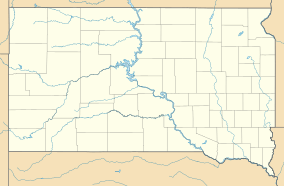Madison Wetland Management District facts for kids
Quick facts for kids Madison Wetland Management District |
|
|---|---|
|
IUCN Category IV (Habitat/Species Management Area)
|
|
| Location | South Dakota, United States |
| Nearest city | Madison, SD |
| Area | 129,700 acres (524 km2) |
| Established | 1962 |
| Governing body | U.S. Fish and Wildlife Service |
| Website | Madison Wetland Management District |
The Madison Wetland Management District is a special place in South Dakota, United States. It's like a huge nature park, covering about 129,700 acres (which is over 524 square kilometers)! This area helps protect important wetlands and the amazing wildlife that lives there.
A big part of this land, about 38,500 acres, is owned by the United States government. The rest of the land is also protected through special agreements with the state and other groups. The whole district is managed by the United States Fish and Wildlife Service, which works to keep nature safe.
Contents
What is a Wetland Management District?
A Wetland Management District (WMD) is a special kind of protected area. Its main job is to take care of wetlands. Wetlands are areas where water covers the soil, or is present near the surface, for all or parts of the year. Think of them as soggy lands like marshes, swamps, or bogs.
These districts are super important for nature. They help protect different kinds of plants and animals. They also make sure there's enough space for birds to rest and find food during their long migrations.
Home of the Prairie Potholes
The wetlands in the Madison District are part of a much larger area called the Prairie Pothole Region. This region stretches across parts of the United States and Canada. It's famous for having millions of small, shallow wetlands that look like "potholes" or small ponds.
These potholes were formed thousands of years ago by melting glaciers. They fill up with water from rain and snowmelt. This makes them perfect homes and resting spots for many kinds of birds, especially ducks, geese, and other waterfowl.
Why Prairie Potholes are Important
The Prairie Pothole Region is a vital natural resource. It's often called the "duck factory" of North America. This is because so many migratory birds rely on these wetlands. They use them for nesting, raising their young, and finding food during their long journeys.
Without these wetlands, many bird populations would struggle to survive. The Madison Wetland Management District plays a key role in keeping this important ecosystem healthy. It helps ensure that these birds have safe places to live and grow.
Protecting Nature for the Future
Long ago, many of the Great Plains areas were being plowed for farming. This meant that important wetlands were being lost. People who cared about nature, called conservationists, realized this was a big problem. They worked hard to save these special wetland areas.
Their efforts led to the creation of places like the Madison Wetland Management District. These protected areas are now known as Waterfowl Production Areas. By preserving this region, we help make sure that hundreds of migratory bird species can continue to thrive. Many other plants and animals also depend on this unique wetland ecosystem.
Activities You Can Do
The Madison Wetland Management District is a place for nature, but it also allows some activities for people to enjoy. If you visit, you might be able to go fishing in certain areas. Hunting is also allowed in limited spots and only during specific seasons.
These activities are carefully managed to make sure they don't harm the wildlife or the environment. It's a way for people to connect with nature while still protecting it for everyone.



